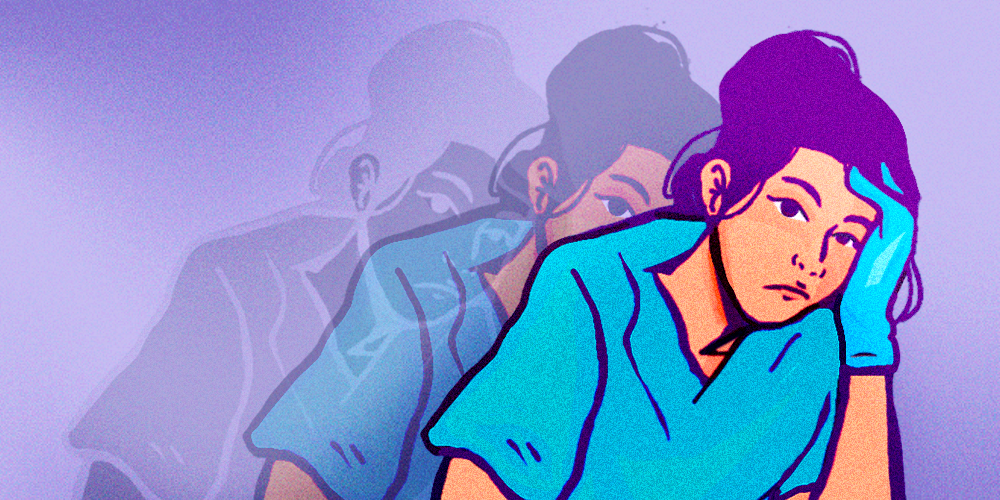Addressing Harmful Myths About Asian Americans: A Collaborative Autoethnography
Click here to view the full academic paper.
sian Americans are well-represented in academic medicine but continue to face discrimination in the workplace. Asian American discrimination can take some unique forms, such as the model minority myth and the forever foreigner stereotype.
The experiences of Asian Americans, including healthcare providers, are typically overlooked because we are not considered underrepresented in medicine. However, Asian Americans experience racism in numerous environments, including professional settings. Our experiences are not the same as the white majority in medicine, nor are they the same as our Brown/Black colleagues.
Although Anti-Asian sentiment in the United States is not new, the sharp rise in reported cases of discrimination since 2020 has shed light on the fact that Asian Americans do, in fact, experience racism. Educating people about these forms of racism is one way we can begin to combat this discrimination and ensure the Asian Americans who are part of our medical staff feel welcome and included.
What is the Model Minority Myth?
The model minority myth (MMM) is based on stereotypes of Asian Americans as whiz kids, geniuses, overachievers with Tiger moms who push them to succeed, etc. This myth promotes the idea that Asian Americans have achieved success within the United States through innate talents unique to their race.
This myth is extremely damaging to Asian Americans. It minimalizes racism and discrimination that we experience while separating us from other communities of color.
It also lumps all Asian Americans, who come from more than 50 ethnic groups, into one identical group. Asian Americans practice a wide range of religions, customs, and traditions. We have unique immigrant stories, but the MMM makes us seem all the same.
The MMM is particularly divisive in medicine and healthcare. Because Asians make up a greater proportion in medicine compared to the general population, it’s assumed there is no racism against Asians because how could we be so successful if there is discrimination against us? This belief that Asian Americans don’t face racism can affect admission policies at colleges and medical schools. It can even affect how colleges; communities and the government allocate resources to immigrants. There may not be scholarships for Asian Americans, for instance, even if they are the first generation of their family to attend college.
The MMM also has a history of being used to pit Asian Americans against other races. The term was coined by sociologist William Peterson in 1966. Peterson stereotyped Japanese Americans as a rule-abiding and hardworking group which overcame the adversity of internment during World War II within 20 years. Peterson's work used the success of Japanese Americans to refute Black Americans claims of racial oppression during the Civil Rights movement. The MMM rewrites history and dismisses the experiences of all minority communities.
What is the “Forever Foreigner” Theory?
The Forever Foreigner (or Perpetual Foreigner) theory describes systemic racism against Asian Americans as people who can never truly be American. No matter if we are born in the United States or our families have been here for generations, we are treated as if we will always be foreign to this country.
The forever foreigner stereotype became more apparent during the coronavirus pandemic. Though the origins of the virus had nothing to do with Asian Americans, many of us were treated as if we had brought the disease to the United States and continued to spread it. This led to an increase in Asian hate-crimes, violence and murders. Furthermore, this potentially worsened the divide between Asian Americans and other BIPOC communities.
This stereotype, combined with the MMM, can make Asian Americans feel invisible. While we are treated as if we don’t belong in white American spaces, we are also treated as if we don’t belong with other minority communities because of the ways we have benefited from the MMM stereotype. Feeling in-between and invisible can make Asian Americans feel like even more of an “other.”
We are Asian Americans in academic medicine (mostly Family Medicine) who have been affected by the MMM as well as other aspects of Asianization, and have watched with dismay as anti-Asian sentiment has risen. While our experiences are not reflective of all Asian Americans, we thought it was important to shed light on the experiences of an under-researched group.
By talking about these myths and stereotypes, we can help dispel them and improve the work environment for our Asian American colleagues, residents and students.
Candace Chow
Michael Chen
Justine Ly
Darin Ryujin
Marlana Li
Jose Rodriguez
Tiffany Ho
Well-being specialist Trinh Mai started BIPOC (Black, Indigenous, People of color) Check-in & Support via Zoom as a place to grieve and honor George Floyd and process ongoing racism. This is a space for employees at the U who self-identify as BIPOC to experience community, share struggles and solutions, and celebrate being who they are. Trinh and some members of the check in group share how the group started, how it has evolved and its lasting impacts.
Whether it was growing up in segregated Georgia, working with leaders across the country during the civil rights movement, leading a congregation at Calvary Baptist Church, or teaching an ethnic studies class at the U, Reverend France A. Davis has lived the theme of “Choosing Love Over Hate.” With the U of U Marriott Library, he shares his experiences and discusses “choosing love” in navigating today’s challenges.
Join the University of Utah community as we celebrate Dr. Martin Luther King, Jr.’s life and legacy. Here are suggested readings, resources, events and conversations throughout the week that honor Dr. King’s vision, offer direction, and challenge us to determine a better way forward.
